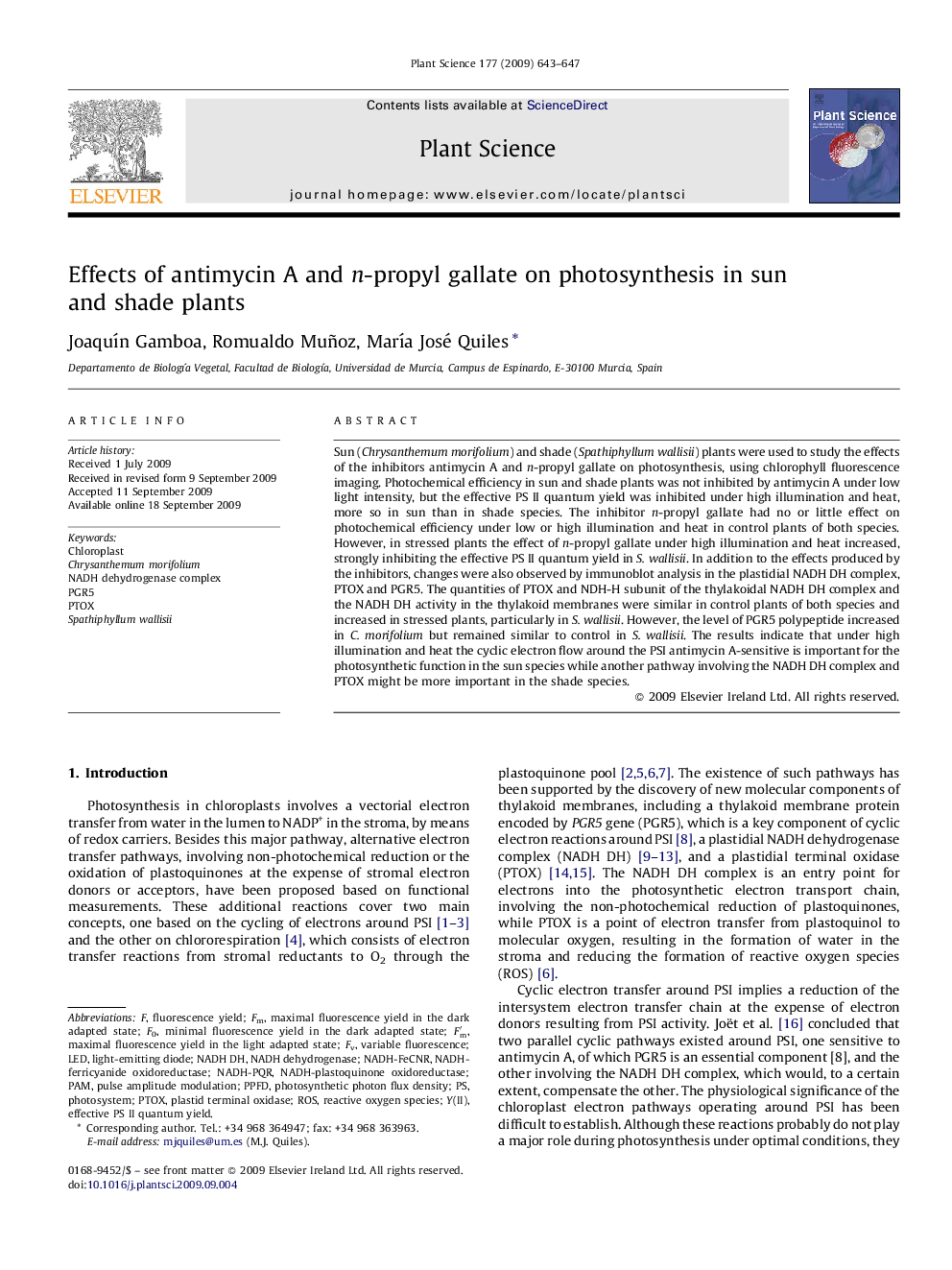| Article ID | Journal | Published Year | Pages | File Type |
|---|---|---|---|---|
| 2017879 | Plant Science | 2009 | 5 Pages |
Sun (Chrysanthemum morifolium) and shade (Spathiphyllum wallisii) plants were used to study the effects of the inhibitors antimycin A and n-propyl gallate on photosynthesis, using chlorophyll fluorescence imaging. Photochemical efficiency in sun and shade plants was not inhibited by antimycin A under low light intensity, but the effective PS II quantum yield was inhibited under high illumination and heat, more so in sun than in shade species. The inhibitor n-propyl gallate had no or little effect on photochemical efficiency under low or high illumination and heat in control plants of both species. However, in stressed plants the effect of n-propyl gallate under high illumination and heat increased, strongly inhibiting the effective PS II quantum yield in S. wallisii. In addition to the effects produced by the inhibitors, changes were also observed by immunoblot analysis in the plastidial NADH DH complex, PTOX and PGR5. The quantities of PTOX and NDH-H subunit of the thylakoidal NADH DH complex and the NADH DH activity in the thylakoid membranes were similar in control plants of both species and increased in stressed plants, particularly in S. wallisii. However, the level of PGR5 polypeptide increased in C. morifolium but remained similar to control in S. wallisii. The results indicate that under high illumination and heat the cyclic electron flow around the PSI antimycin A-sensitive is important for the photosynthetic function in the sun species while another pathway involving the NADH DH complex and PTOX might be more important in the shade species.
